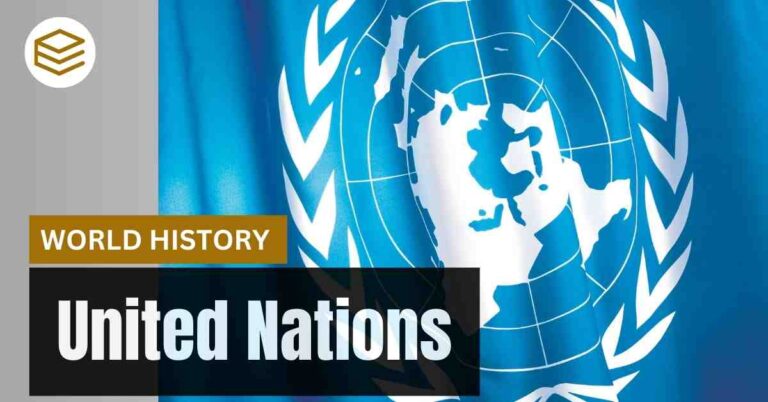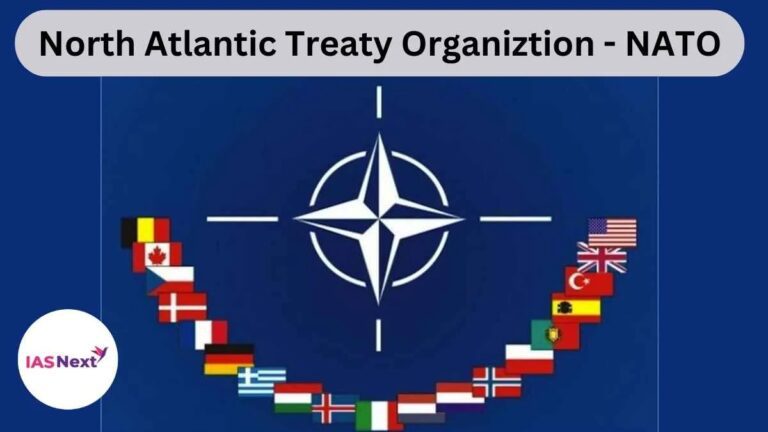October 25, 2025 12:54 am
Introduction:
- The Association of Southeast Asian Nations (ASEAN) is a regional organization established to foster political and social stability among Asia-Pacific’s post-colonial states amid rising tensions.
- Formed on 8 August 1967 in Bangkok, Thailand, with the signing of the Bangkok Declaration.
- ASEAN’s motto is “One Vision, One Identity, One Community”.
- The ASEAN Secretariat is headquartered in Jakarta, Indonesia.
Goals and Objectives of ASEAN:
- Accelerating economic growth, social progress, and cultural development through joint efforts, fostering a prosperous and peaceful Southeast Asian community.
- Promoting regional peace and stability through respect for justice and adherence to the principles of the United Nations Charter.
- Encouraging collaboration in economic, social, cultural, technical, scientific, and administrative matters.
- Providing mutual assistance in education, professional development, and technical training.
- Collaborating for better utilization of agriculture and industry, expanding trade, improving transportation and communication, and raising living standards.
- Supporting Southeast Asian studies.
- Cooperating closely with international organizations sharing similar goals and seeking avenues for closer collaboration.
Key Facts:
- 3rd largest market globally, surpassing the EU and North America.
- 6th largest economy in the world and 3rd in Asia.
- 4th most popular investment destination worldwide.
- 4th largest trading partner of India.
Fundamental Principles:
- Mutual respect for the independence, sovereignty, equality, territorial integrity, and national identity of all nations.
- Upholding the right of each state to live free from external interference, subversion, or coercion.
- Non-interference in each other’s internal affairs.
- Peaceful resolution of disputes and renunciation of force.
- Effective cooperation among member states, as outlined in the Treaty of Amity and Cooperation (TAC) of 1976.
Institutional Mechanism of ASEAN:
- ASEAN Summit: The primary decision-making body, attended by heads of state, held annually to discuss regional and international issues.
- ASEAN Coordinating Council (ACC): Implements Summit decisions, coordinates activities, and comprises senior officials from member states.
- ASEAN Secretariat: Manages daily operations, headquartered in Jakarta, led by a Secretary-General appointed by member states.
- ASEAN Regional Forum (ARF): Focuses on security dialogue and cooperation, including ASEAN and Asia-Pacific countries.
- ASEAN+3: A forum for collaboration between ASEAN, China, Japan, and South Korea, covering economic, political, and security matters.
- Various bodies and committees for areas like trade, economic development, and environmental protection.
India and ASEAN Relations:
- India’s multi-faceted relationship with ASEAN stems from global political and economic shifts since the 1990s, resulting in the Look East Policy, which has evolved into the Act East Policy.
- ASEAN is central to India’s foreign policy, transitioning from a Sectoral Partner in 1992 to a Summit-level Partner in 2002.
- The India-ASEAN Strategic Partnership gained momentum with the Act East Policy announcement in 2014.
- 2022 marked 30 years of ASEAN-India relations, celebrated as ASEAN-India Friendship Year.
Economic Cooperation:
- ASEAN is India’s 4th largest trading partner, accounting for about 6% of India’s overall trade.
- 28% of India’s exports go to ASEAN, bolstered by the ASEAN-India Free Trade Area.
- The ASEAN India-Business Council (AIBC), established in 2003, brings private sector players from India and ASEAN on one platform.
Socio-Cultural Cooperation:
- Initiatives like ASEAN student exchanges, training courses for diplomats, and parliamentary exchanges boost people-to-people interactions.
Connectivity Projects:
- ASEAN-India Connectivity: Includes the India-Myanmar-Thailand Trilateral Highway and the Kaladan Multimodal Project. Plans for extending the highway to Cambodia, Lao PDR, and Vietnam are underway.
Agriculture Initiatives:
- Projects include farmer exchanges, ASEAN-India agricultural fellowships, and training on organic certification for fruits and vegetables.
Science & Technology Collaboration:
- Efforts like the ASEAN-India S&T Digital Library, collaborative research on combating malaria, and projects on biomining and bioremediation technologies.
Political Security Cooperation:
- ASEAN is pivotal in India’s Indo-Pacific vision of Security and Growth for All in the Region (SAGAR).
ASEAN-India Plan of Action:
- The Plan of Action for 2004-2010 was the first implementation phase for peace, progress, and shared prosperity.
- The 3rd Plan of Action (2016-2020) focused on capacity building and development, especially under the Initiative for ASEAN Integration (IAI).
Significance of ASEAN for India:
- ASEAN’s centrality in India’s Act East Policy.
- Joint efforts to tackle transnational threats.
- Deepening cultural and economic cooperation.
- Enhanced defense and security partnerships.
Challenges Faced by India in ASEAN Engagement:
- Skewed trade relations favoring ASEAN.
- China’s influence and its impact on ASEAN’s unity.
- Threats to ASEAN’s centrality in the Indo-Pacific due to China’s assertiveness.
- Conflicting priorities like BRI and RCEP.
Challenges Faced by ASEAN:
- The USA-China rivalry poses a strategic challenge, pressuring ASEAN nations to align with either power.
- Geopolitical tensions risk destabilizing the region.
- Diverging interests and national priorities hinder cohesive action.
- Internal and external security threats, including territorial disputes and environmental issues.
- ASEAN grapples with corruption, demographic shifts, economic disparities, and environmental degradation.
Way Forward:
- ASEAN must focus on enhancing governance, promoting transparency, and strengthening regional connectivity.
- Bridging the development gap is critical, especially in healthcare, education, and technology.
- Efforts should focus on fostering inclusive growth, sustainable development, and promoting democracy.
- Investing in a knowledge-based and digital economy will be pivotal.
- ASEAN should embrace regionalism and multilateralism, working collaboratively to achieve the ASEAN Community Vision.





[…] THE ASSOCIATION OF SOUTHEAST ASIAN NATIONS (ASEAN) […]